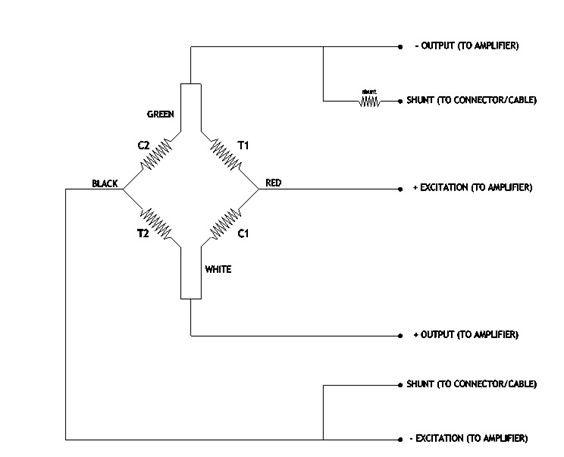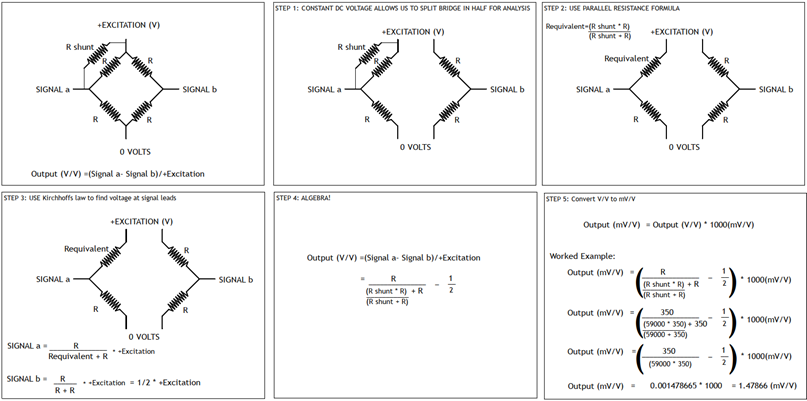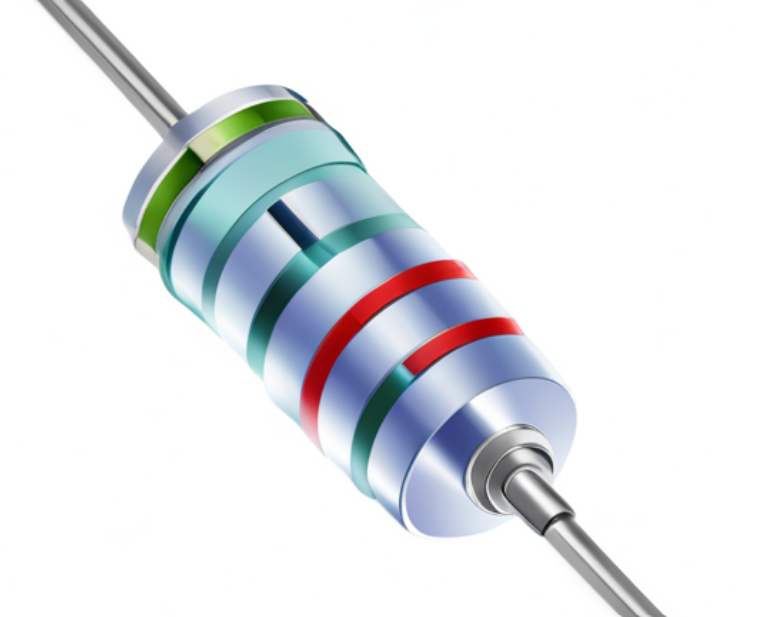Load Cell Shunt Calibration

Load Cell Bridge with a Shunt Calibration.
Load cell shunt calibration is a cost-effective means to confirm that the load cell and indicator system are not experiencing significant drift or potential damage.
Load cell shunt calibration involves introducing a known electrical resistance (shunt resistor) in parallel with the load cell, allowing for modifications to the output signal.
The shunt resistor simulates a specific load condition, and the indicator system should display a corresponding reading.
This reading can be compared to the expected output based on the known resistance of the shunt resistor.
This practice uses a known resistor across the load cell bridge (ex. 30k Ohm) and monitors the system. Load cell shunt calibration involves simulating the input of strain by using a resistance value. It is accomplished by shunting or connecting in parallel (shunted) across the load cell terminals.
If a discrepancy is noted, it strongly suggests that the system should be compared to a recognized standard, and calibration may be required.
The main benefit is that it is a quick check to ensure the meter and load cell are stable to some degree of uncertainty. Usually, a single shunt value suffices for stability verification. However, employing a load cell shunt calibration for positive and negative values can offer extra reassurance, especially in systems susceptible to tampering, ensuring that nothing has changed on the meter's side.
Here's a basic overview of how load cell shunt calibration works:
- Normal Operation: In a properly functioning load cell, the electrical resistance across its terminals changes proportionally to the applied force or load. This change in resistance corresponds to a change in the electrical signal output.
- Introduction of Shunt Resistor: To perform a load cell shunt calibration, a known electrical resistance (shunt resistor) is connected in parallel with the load cell. This effectively creates an alternative current path for the electrical signal.
- Modification of Output: By adjusting the value of the shunt resistor or the load resistor, the overall resistance in the circuit changes. This modification causes the load cell to respond as if a specific load were applied, even if no physical load is present. The electrical signal output of the load cell is then modified to match the expected response.
- Comparison and Verification: The output signal is compared to the expected value based on the known resistance introduced by the shunt resistor. Any discrepancies between the expected and actual readings are used to verify the load cell's output, ensuring accurate and calibrated measurements.
Note: The end-user should perform this at some defined frequency. It is likely too late to spot differences when it gets to the calibration laboratory. There may have been six months to whatever period between calibrations, which defeats the purpose of using the shunt.
- Validation: After the load cell shunt calibration, one can verify that the output matches the expected values. If it does not, there is likely a problem with the load cell, assuming other load cells check out.
A load cell shunt calibration is an inexpensive check to decrease overall risk by spotting trends before too much time has elapsed. It's important to emphasize that a proper procedure should be established to utilize load cell shunt calibration correctly.
Consistently applying netting or pressing tare on the meter before employing load cell shunt calibration can significantly reduce the effectiveness of detecting a load cell overload.
A Load cell shunt calibration Example:

A Worked Example to Calculate Approximate mV/V Output.
In the above example, a 59K shunt is used across a 350 OHM bridge load cell, and the expected output is 1.47866 mV/V. Of course, there will likely be a slight difference in the actual value as the cable length will have additional resistance.
The recommendation is to find the resistor value that will allow you to perform a simple check to ensure the system functions properly. Many meters, like the Morehouse 4215, have the built-in capability to perform load cell shunt calibration.
Verification of the Adjustments.
How does the calibration laboratory verify that the adjustments are made correctly?
Do they apply a series of forces to test the results, or do they apply a correction equation and assume things are okay?
For example, Morehouse continuously adjusts the force-measuring instrument and issues an "As Returned" calibration report.
In contrast, others use alternate methods such as a load cell shunt calibration or program the offset or corrections into the meter and assume it is good.
If they are programming a correction factor, there should be some testing method to verify it was done correctly.
Using a load cell simulator or applying the force again to the instrument and verifying the results would work.
If the calibration report has coefficients, one could verify the coefficients visually and double-check against the calibration report.
--Henry Zumbrun, President of Morehouse Instrument Company
More Information From Morehouse
We believe in changing how people think about force and torque calibration in everything we do.
This includes setting expectations on load cell reliability and challenging the "just calibrate it" mentality by educating our customers on what matters and what causes significant errors.
We focus on reducing these errors and making our products simple and user-friendly.
This means your instruments will pass calibration more often and produce more precise measurements, giving you the confidence to focus on your business.
Companies around the globe rely on Morehouse for accuracy and speed.
Our measurement uncertainties are 10-50 times lower than the competition.
We turn around your equipment in 7-10 business days so you can return to work quickly, saving you money.
When you choose Morehouse, you're not just paying for a calibration service or a load cell.
You're investing in peace of mind, knowing your equipment is calibrated accurately and on time.
Contact Morehouse at info@mhforce.com to learn more about our calibration services and load cell products.
Email us if you ever want to chat or have questions about a blog.
We love talking about this stuff.
Our YouTube channel has videos on various force and torque calibration topics here.



